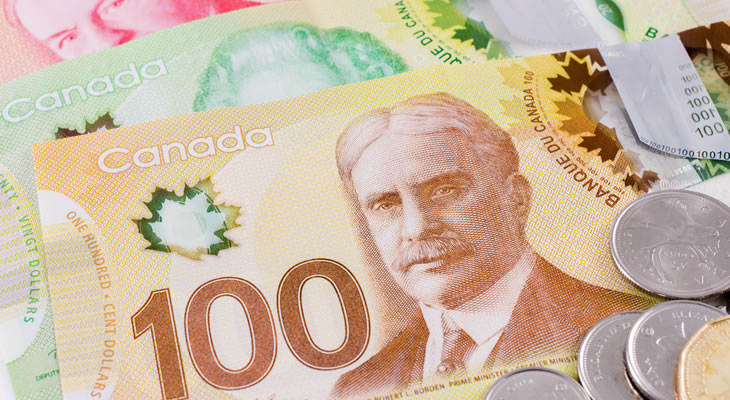Pound to Canadian Dollar Exchange Rate Trends Near Highs on Bank of England (BoE) Speculation
Updated 16:42 BST 07/06/2018:
While Sterling (GBP) was pressured for most of Thursday’s European session by Brexit jitters, the Pound to Canadian Dollar (GBP/CAD) exchange rate hit a new weekly high in the afternoon.
GBP/CAD touched on a high of 1.7466 towards the end of the day, in reaction to comments from Bank of England (BoE) Deputy Governor Dave Ramsden.
Ramsden hinted that the BoE could hike UK interest rates in August 2018. He signalled that the bank was confident that the UK economy was recovering from the weak performance seen in Q1.
[Published 11:14 BST 07/06/2018]
Pound to Canadian Dollar Exchange Rate Climbs despite Solid Canadian Data on NAFTA Fears
While Canadian data has been solid this week and Bank of Canada (BoC) interest rate hike bets have been climbing, the Pound to Canadian Dollar (GBP/CAD) exchange rate has advanced due to market concerns about the future of NAFTA.
The North American Free Trade Agreement (NAFTA) has been undergoing renegotiation this year and has been a major cause of concern for Canadian Dollar (CAD) investors.
The Canadian Dollar briefly pushed GBP/CAD from 1.7284 to 1.7205 at the beginning of the week, but the pair has since advanced. By Thursday morning, GBP/CAD was trending near a high of 1.7451 – the pair’s best level since the 9th of May.
This was despite a lack of supportive factors in Pound (GBP) trade, with Brexit uncertainties and Bank of England (BoE) caution keeping the British currency generally unappealing.
Pound (GBP) Exchange Rate Climbs despite Brexit Uncertainties
As Britain’s latest services stats did not have a significant impact on the Pound outlook, Sterling trade has been more focused on Brexit headlines this week.
Signs of fresh fissures within the UK government over how to handle the Brexit process, as well as general caution from Bank of England (BoE) officials, have limited market appetite for Sterling.
On Wednesday, BoE policymaker Ian McCafferty noted that the bank was in no hurry to wind back its quantitative easing (QE) schemes.
McCafferty also suggested that if necessary, the bank could cut UK interest rates again even if it hikes rates soon:
‘We would like to get interest rates up a little higher than they currently are, such that we could use interest rates in both directions. We could cut them again as well as continue to push them up were the economic circumstances to require that.’
Despite this news keeping a lid on Sterling strength though, the currency was still able to climb against an even weaker Canadian Dollar.
Canadian Dollar (CAD) Pressured by NAFTA Jitters Despite Strong Domestic Data
Canadian data has been generally impressive over the past few weeks and the Bank of Canada (BoC) has taken a hawkish stance on Canadian monetary policy for the second half of 2018.
However, broad market anxiety about US trade protectionism has once again dented demand for risky trade-correlated currencies like the Canadian Dollar.
While North American Free Trade Agreement (NAFTA) renegotiations had been seen as largely optimistic lately, concerns re-emerged this week that US President Donald Trump is not happy with the deal.
As NAFTA progress has been repeatedly stalled recently, there are concerns that the talks could run into 2019.
US President Trump has expressed a desire for the US to hold separate NAFTA talks with both Canada and Mexico, rather than talks being between all three nations.
This has worsened jitters that NAFTA renegotiations could still collapse entirely.
While Wednesday’s Canadian trade balance report from April saw stronger exports, the Canadian Dollar has been unable to notably benefit amid NAFTA concerns.
Pound to Canadian Dollar Forecast: Poor Canadian Unemployment Would Knock GBP/CAD Lower
The Canadian Dollar’s strength is likely to continue to drive the Pound to Canadian Dollar (GBP/CAD) exchange rate for the remainder of the week.
While NIESR’s latest UK growth estimate could influence Sterling trade on Friday, global trade news and Canadian job market data is likely to have a bigger impact on the Canadian Dollar.
If Canada’s May job market results disappoint investors, the Canadian Dollar’s support will become even thinner. The Canadian Dollar is already weak on global trade jitters, but a poor domestic outlook would leave the currency more broadly unappealing.
Canada’s unemployment rate is forecast to have remained at 5.8%, with the employment change figure forecast to have improved from -1.1k to 17.5k.
Of course, any negative news on NAFTA would also have a negative impact on the Canadian Dollar.
On the other hand though, strong Canadian job data or signs of progress in NAFTA talks could actually knock GBP/CAD back down from its weekly highs.
Next week, key UK inflation and unemployment stats mean the Pound is more likely to drive the Pound to Canadian Dollar (GBP/CAD) exchange rate.


Comments are closed.